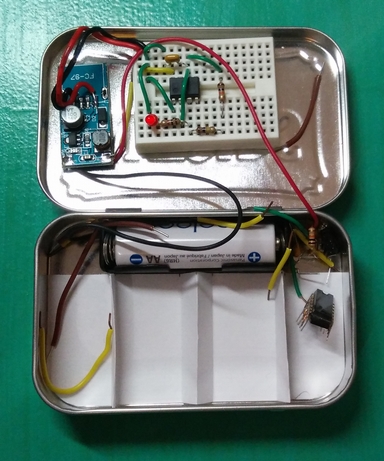Analog circuit kit
I was browsing the web the other day and I came across this project by Nick Ames. It is an electronics lab within an Altoids tin and how cool is that? I really like small, portable, and above all electronics projects and this seems like just an absolutely lovely way to teach people about analog circuits.
In the comments, someone was asking if he could provide a tutorial to use the items in the kit, however, there was no reply. I think this would be a pretty cool project to work on and items can be incrementally added as the project grows.
We can even create a cool backstory for the project:
It is year 2017 and a massive solar flare has wiped out all your favourite electronics. Your Adafruit Feathers, Arduino Unos, Sparkfun Lily Pads, you name it, they are all gone.
However, you discover that your trusty Altoids tin has kept some of your electronics safe, and you figure that with those items, you can perhaps make something cool to pass the time.
Hmm pass the time. Well, for many things, we need timers, and there is no better way to do that than with the 555 timer you have on hand...
So we start by building a timer, which helps us send clock pulses to build other integrated circuits, which in turn, will help us to build more advanced electronics. I think this is a good way to get your hands dirty in hardware electronics.
I experimented with the analog kit a little. However, the suggested method of storing the electronics is not really good as seen in the picture:

Figure 1. First Version, mess on top right
While paper is cheap and easy to use, they are easily crushed by other components and without the dividers, everything turns into a big mess, and it's horribly annoying having to pick through the pieces.
The original design was not powered because the author couldn't find enough space to fit a battery in. But if our backstory is a post apocalyptic world we want to be able to close our kit and get moving any time we need to, because, y'know, can't be too ready. So as a result we have to cut most of the leads short in order to close it properly and have wires do the rest of the connecting for us. Because most IC's that I'm interested in using are based on 5V logic, I included a cheap step-up circuit powered by a 1.2V rechargeable battery.
So the next steps are to perhaps use 3D printing to build the dividers. However, it must have space for the battery holder and the prototyping board. Or a stiffer piece of paper can be used.
Additional notes: I saw some Altoids being sold for $1.75 at Trader Joe's but Adafruit is selling the same unmarked tins for $2.50.
What do you think? Let me know!
